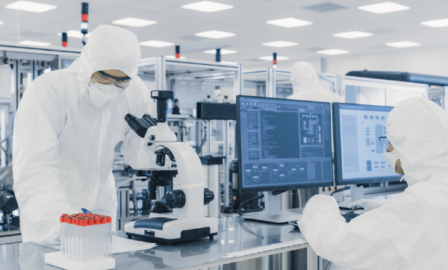Is Your Smartphone a Medical Device?
At what point does a smartphone health app enter the medical devices space, triggering oversight by the FDA? As a digital health technology innovator, are there parameters to follow in order to avoid the medical device label or to at least streamline approval? With all of the exciting new health technology already on the market as well as in development stages, these questions of regulatory implications inevitably arise. From behemoth developers like Google and Apple to small start-ups and individual app designers, many in the health software space are watching carefully for signs, often unsure of the level of oversight their new technologies will be subjected to. So, is your smartphone a medical device?
For guidance, we turn to the 21st Century Cures Act as well as FDA’s recent reimagining of its digital tech regulation, the Digital Health Innovation Action Plan. The Plan implements the provisions in the Cures Act that relate to software and aims to help advance Software as a Medical Device (SaMD) through efficient and risk-based approaches. The Plan includes the Agency’s Software Pre-Cert Pilot Program, a voluntary pilot program wherein pre-certified developers can market lower-risk devices without additional FDA review.
Under the 2016 Cures Act, medical software “that supports administrative functions, encourages a healthy lifestyle, serves as electronic patient records, assists in displaying or storing data, or provides limited clinical decision support” no longer falls under the medical device category. To further clarify, in December 2017 the FDA issued draft guidance regarding policy on mobile medical devices, medical image communication devices, low-risk general wellness products, and so on. Also released in December 2017 is the FDA’s draft guidance on Clinical and Patient Decision Support Software which provides examples of devices the FDA considers to be medical devices to be regulated.
Is Your Smartphone a Medical Device? – Key Takeaways
While there is still a level of uncertainty surrounding health software regulation, there are some key takeaways to be gleaned from the above guidance.
The FDA hinges its regulatory focus on two primary indicators: the product’s claims and the particular functions of the product’s technology. For instance, one of the most stand-out examples of functions the FDA intends to regulate is “software that analyzes multiple physiological signals (e.g. sweat, heart rate, eye movement, breathing – from FDA-regulated devices) to monitor whether a person is having a heart attack or narcolepsy episode.”
Arguably, Fitbit could fall within this scope. But Fitbit makes no medical claims regarding the diagnosis of a disease that would trigger oversight. The FDA describes four examples of software functions that it will decline to regulate. This includes “software functions intended for maintaining or encouraging a healthy lifestyle” so long as products’ claims are “unrelated to the diagnosis, cure, mitigation, prevention, or treatment of a disease or condition.” Newly included in the examples of mobile apps that are not medical devices are “mobile apps that are intended for individuals to log, record, track, evaluate, or make decisions or behavioral suggestions related to developing or maintaining general fitness, health or wellness.”
Players in the digitized health device space must stay vigilantly keyed into the evolving regulatory environment and shifting definitions that will directly affect decision-making vis-à-vis design and marketing strategy.



